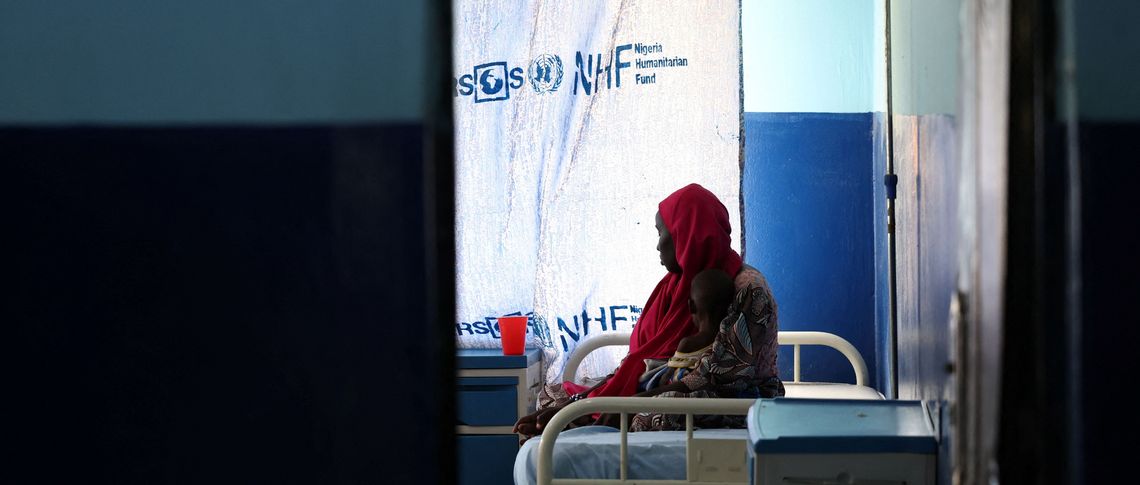In a time of competing catastrophes, it seems worth delivering some good news about poverty and health inequality: poverty can be defeated, health inequalities can be reduced.
The proportion of humans living in poverty worldwide has been dropping for the last two centuries. The share of the global population not able to afford the basic necessities of life fell from 76 per cent in 1820 to 10 per cent in 2018. This improvement in people’s daily lives is worth pondering upon for a moment because it goes against our current rather pessimistic view of the world. Over historical time, daily life did gradually improve for many people.
Poverty leads to premature death and a higher probability of suffering from health conditions – both mental and physical – compared to those in better circumstances. In other words, poverty causes shorter lives and greater suffering. When it comes to health, we observe a social gradient. On average, there is a stepwise worsening in people’s health for each step down the socioeconomic ladder. If you are socially disadvantaged, you are more likely to experience poor health compared to those slightly more advantaged than you. This relationship between social circumstances and health has been observed over time, across countries, and with new diseases and health problems as they emerge.
But there is good news about these health inequalities, too. Between-region inequalities in premature death also dropped over the last two decades. The World Health Organisation (WHO) reports that the global rate of under-five mortality halved between 2000 and 2023 from 77 to 37 deaths per 1000 live births. The biggest drop was observed in low-income countries from 150 to 76 deaths per 1000 live births. However, to achieve the target of eight deaths per 1 000 live births observed in high-income countries, more progress is needed. And this is where we have a problem...
The aftermath of funding cuts
To further these important gains requires investment in global aid, poverty reduction and global health infrastructures. Yet we have seen unprecedented reductions in global aid over the last months that have led to the devastation of infrastructures built over decades. Infrastructure destruction is especially pernicious because of its immediate and long-term consequences on progress underway, especially in low-income settings.
These cuts illustrate how the dismantling of crucial community-based infrastructures directly undermines patient care, even when antiretroviral drugs remain available.
Across Sub-Saharan Africa, local organisations are already experiencing the devastating effects of recent cuts to healthcare programmes. In mid-January 2025, a Burundian health organisation received ‘stop work’ notices forcing it to end its projects providing HIV care. Two of their USAID-funded projects, which made up half of their budget, were abruptly halted. One project, which provided HIV care across 70 per cent of the country, including to children, lost its $1 million funding. The second project, funded at $450 000, focused on prevention and treatment for ‘key populations’, such as homosexual individuals, transgender people and drug users. These cuts affected essential operations like staff salaries, rent and lab tests. This organisation had built trust in local communities, keeping the viral load of many HIV-positive people at undetectable levels by using project funds to pay community volunteers to track down people who had missed appointments, ensuring they attended appointments and communicating on HIV prevention.
Similar disruptions have been reported across the continent, showing that this is not an isolated case. A large South African organisation relying entirely on USAID funding has now closed its doors after giving notice to 3 000 of its employees, shutting 13 offices, and disposing of 150 cars and 500 computers. It had provided support to health care for up to one million people on HIV/AIDS treatment in five urban and rural districts. Drivers, councillors, data capturers, nurses, pharmacy assistants, people doing HIV testing — all lost their jobs, most with no prospects of finding another.
Cameroon provides another example, highlighting how multiple countries face parallel crises. A project leader told me about losing 80 per cent of their funding, which relied on USAID, leading to 79 people losing their jobs. Their ‘key population’ projects were shut down, as was a project supporting over 3 000 orphans, 30 per cent of whom were living with HIV. One heartbroken programme leader described to me how her organisation had eventually gained the trust of sex workers and trans people, having convinced them to step ‘out of the shadows of clandestinity’ to receive care, only to let them down and see them retreat into the dangerous margins of society again.
Too many health and poverty reduction programmes were reliant on a single funding source: the US government.
Taken together, these cuts illustrate how the dismantling of crucial community-based infrastructures directly undermines patient care, even when antiretroviral drugs remain available. After all, once HIV medicine has been delivered to a clinic, ‘it does not grow legs and march itself into people’s mouths’ as a programme leader in Mali described. Programmes have also been forced to stop providing pre-exposure prophylaxis (PrEP), a highly effective prevention treatment that requires consistent medical follow-up.
In the wake of the USAID funding cut announcements in January 2025, confusion reigned. Although some programmes were later told they could resume limited activities, the dismantled infrastructure – ending leases, firing staff and stopping essential care – had already destroyed the system. This instability also breached work contracts, causing legal problems for employers and distress for employees. The cuts raised serious ethical concerns by demanding the end of some clinical trials without concern for the proper medical procedures for stopping patient treatment.
Local organisations worldwide running community healthcare programmes fear for the future of the Global Fund, an international mechanism set up in 2002 to fight AIDS, Tuberculosis and Malaria. In countries like Burundi, it provides 100 per cent of the pharmaceutical treatments and is the major reason why they still receive medications now. It recently confirmed a $1.43 billion cut in funding already allocated for its current funding cycle, representing around 11 per cent of the funding originally committed until 2026. In the last few months since the US cut funding, the UK slashed its international aid budget by 40 per cent from 2027. France diminished its budget by 37 per cent, Germany knocked €1 billion off its international aid. Overall, global health aid is expected to decline by 40 per cent in 2025 compared with the 2023 baseline.
Rebuilding global aid infrastructure
Over the last 11 months, the global public health community and international aid organisations have reflected upon the elephant in the room. Too many health and poverty reduction programmes were reliant on a single funding source: the US government. Suddenly, overnight, that elephant lost its mind and trampled all over decades of progress as well as its own legacy. But when the money was coming into programmes, everyone was busy getting on with the work. The advantage of long-term funding is that you do not have to spend resources chasing money; you can build infrastructure and put your efforts into the work of poverty reduction, delivering care, building trust and providing people with the capabilities they need for a good life.
The evidence that poverty levels have been falling and inequalities in life expectancy have improved is a reminder that progress is possible if our resources are effectively turned to these problems worldwide. A new set of resilient long-term funding infrastructures is urgently needed to rebuild what was destroyed. With political will, we can work to get back on track to further alleviate global poverty and reduce health inequalities in these challenging times.
The Global Fund’s Eighth Replenishment Summit, taking place on 21 November 2025 in Johannesburg, South Africa, presents an opportunity for political leaders to address recent budget cuts and substantively commit to this vital international health-promoting fund. A collaborative global political leadership putting the values of solidarity, equity and progress at the top of their mandate is now vital.






